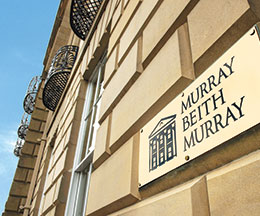Murray Beith Murray LLP is a leading Scottish private client law firm.
For 175 years we have specialised in meeting the legal, financial and administrative needs of individuals and families, family trusts, charities and private companies.
Murray Beith Murray LLP is a leading Scottish private client law firm.
For 175 years we have specialised in meeting the legal, financial and administrative needs of individuals and families, family trusts, charities and private companies.
 The transfer of titles from the Register of Sasines to the Land Register, whether by acquisition, voluntary registration or Keeper-induced registration (KIR), can have undesirable consequences for landowners.
The transfer of titles from the Register of Sasines to the Land Register, whether by acquisition, voluntary registration or Keeper-induced registration (KIR), can have undesirable consequences for landowners.
While in most cases title sheets created by the Keeper are entirely accurate, there is scope for error when registering countryside rather than urban land (with the possible consequence that to date KIR has been used mainly in urban areas). Mistakes can cause delay and expense if, for example, steps have to be taken by a landowner to put matters right before a sale can be completed or loan funds released.
Mapping is required to demonstrate the landowner’s interpretation of the title deeds, both to depict the extent of the property or a burdened area. The Keeper’s interpretation of the recorded title deeds may not, however, match the landowner’s interpretation. The registration process may also highlight latent errors in the recorded title deeds such as a missing reference point on a plan intended to show the route of an access track.
‘Off-register’ rights should also be considered before an application is submitted. If a landowner does not assert the existence of a servitude, for example, a right of access over a hill track on a neighbouring property established by usage (a prescriptive servitude) rather than created in a title deed, this right of access will not be entered on the register and the resulting title sheet produced will be ‘inaccurate’.
If the landowner wishes to correct the position after first registration has taken place by adding the omitted access right, this can only be done by an application to rectify the title and it is possible that a declarator from the Lands Tribunal might be necessary before the Keeper will agree to do so.
In addition, a title sheet can become inaccurate as a result of a later event such as a change of company name or failure to enter a landowner’s right or reservation in the Burdens section of a corresponding burdened property title. It is also possible that a neighbour could lose a right over a landowner’s property through a period of non-use (negative prescription) in which case the right should be removed from the title sheet(s).
There are various paths from ‘inaccuracy’ to ‘accuracy’ but they will not lead to a satisfactory outcome for all. The Land Registration Acts place duties on the Keeper to rectify titles in certain circumstances but there are other considerations. An inaccuracy can be cured by prescription. For example, a registered proprietor with a defective title can gain good title following 10 years’ possession.
Generally, the law protects the rights of persons who acquire land in good faith, so if party A is inaccurately registered as owner on the strength of an invalid deed and sells the land to party B (who is in good faith) and the land has been possessed for one year either by A or by A and B consecutively, then the title sheet is considered accurate as showing party B as the owner. Therefore, there is a benefit to registering title in order to avoid the risk since if it occurs the only remedy available to the rightful landowner may be a claim for compensation against the Keeper.
If rights are to be correctly registered and protected, a team effort is required between a landowner and his agents.
We are trusted advisors with vast experience in rural property matters, including voluntary registration and rectification of title. Our highly personal service reflects our culture, which is centred on integrity, trust and expertise, and the guidance we provide has been designed to be an investment rather than an expense. For more information, please contact us today.
View our rural property group here.
